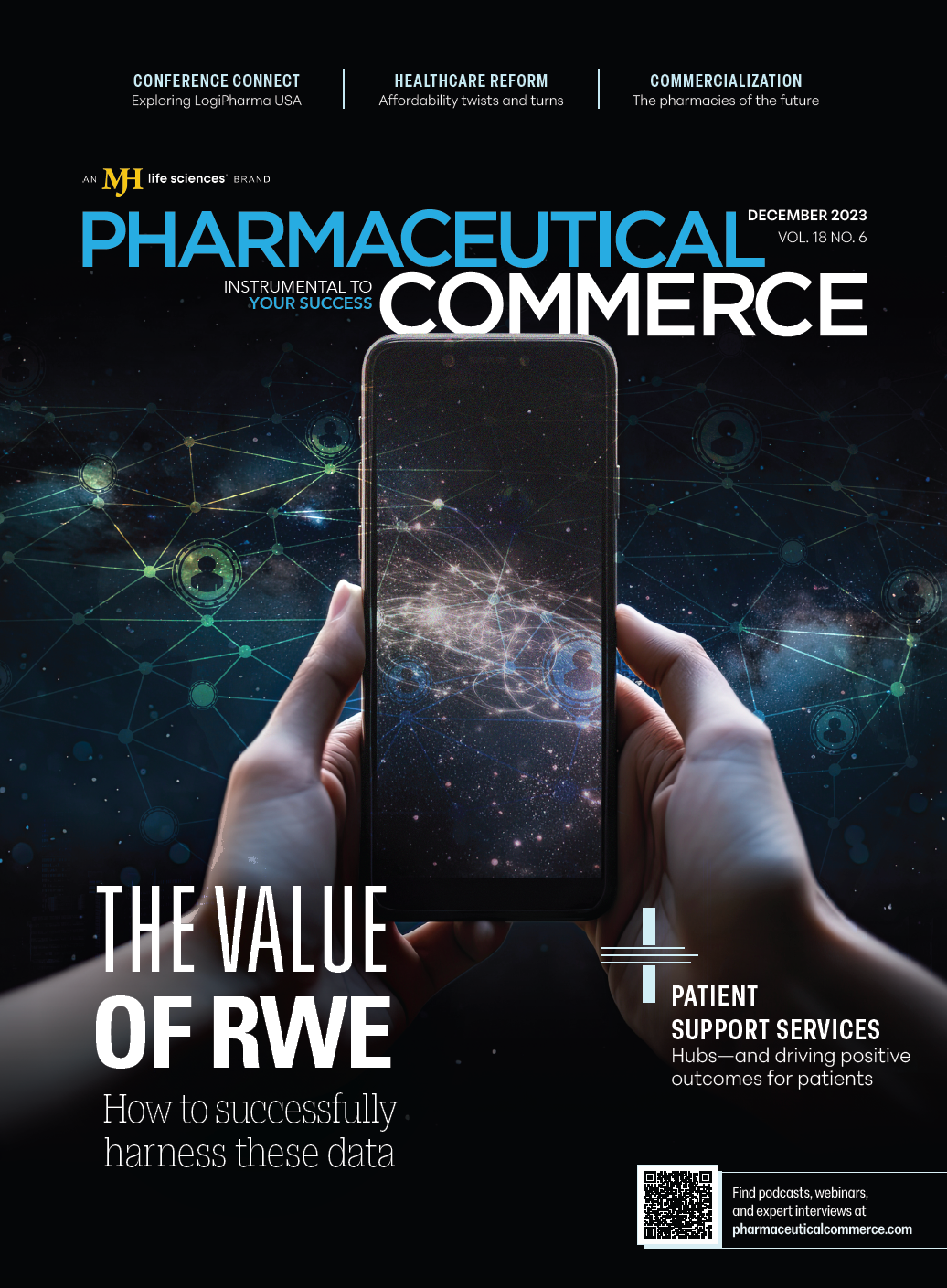Navigating the Biosimilars Marketplace
How to provide effective brand engagement in this rocky yet emerging landscape.

As many biologic drugs approach patent expiration, with 20+ biologic products experiencing loss-of-exclusivity between 2022-24, the market is seeing an increased focus on biosimilars. However, while these follow-on products have shown promise as cost-effective alternatives to their originator biologics, some could argue that they have not yet had the transformative effect that many expected. Keeping this in mind, there are a multitude of challenges that have contributed to their struggle in the market.
For one, there is market competition. The best-selling drug, Humira, now faces competition in the US after a 20-year monopoly, with as many as 10 Humira biosimilars1 that were expected to launch in 2023. These drugs are designed to be highly similar to the originator biologics in terms of safety, efficacy, and quality. As a result, there is limited differentiation among biosimilars themselves, which makes it challenging for manufacturers to establish a unique value proposition and gain a competitive edge. This can lead to a crowded and highly competitive market with little product differentiation.
Established trust and familiarity with originator biologics can also make physicians and patients hesitate to switch to biosimilars. According to research from Cardinal Health, physician attitudes and openness to biosimilars varies by specialty.2 Even where physicians are comfortable with biosimilar prescribing, the data reveal a gap between physicians’ general comfort and their willingness to switch their patients, as well as notable concerns about efficacy. When physicians have concerns about safety, efficacy, and interchangeability, this may lead to resistance or slow adoption of biosimilars, despite their proven similarity.
We cannot forget about pricing and reimbursement policies—these heavily influence the adoption and uptake of biosimilars. For example, when rheumatologists, gastroenterologists, and dermatologists who have patients eligible to use Humira biosimilars were asked which patients they are most likely to prescribe a biosimilar to, the most common response among the Humira-prescribing specialists was “existing patients for whom payers have mandated a biosimilar,” suggesting that pricing and payer reimbursement policies will drive uptake.2
However, in some regions, policies may still prioritize originator biologics or offer limited incentives for healthcare providers (HCPs) to switch to biosimilars, hindering their market penetration.
Evolving engagement at point-of-care
The result of these market challenges means that biosimilar brands face an extra educational lift compared to novel drugs or traditional generics; they not only need to raise general brand awareness, but they also need to build trust in their efficacy and safety data with physicians that are hesitant to prescribe a less familiar type of product.
However, currently, there is no singular/dominant source where physicians are learning about biosimilar availability, none are embedded in the care journey, and most rely on circumstance or resource-intensive channels.
Results of an OptimizeRx survey3 determined that physicians learn about new biosimilars via:
- 56% colleagues
- 48% journals
- 42% sales reps
- 40% independent research
Choosing the right digital engagement strategies that align with the needs of physicians and patients at different stages of the care journey can significantly increase reach and awareness for biosimilar brands. One of the most powerful channels for targeted brand messaging is the electronic health record (EHR), which allows biosimilar brands to provide value at every stage of the patient journey, while maintaining competitive brand placement.

By understanding the EHR workflow and engaging HCPs where and when they’re making care decisions, biosimilar brands can tailor their messaging for each step in the care journey:
- Pre-visit/chart review: Focus on reinforcing clinical efficacy and safety, while building awareness of ideal patient profiles and specialty prescribing guidelines.
- During the patient visit: Alert HCPs where your biosimilar has preferred access while also placing the resources providers need to educate and communicate with patients at their fingertips, such as access to branded vouchers and saving offers.
- Post-visit/medication access: Provide clarity on coverage, affordability, prior authorization processes, and specialty distribution information.
- Outside visit/researching: Emphasize clinical evidence, supportive resources, and cost savings of your biosimilar.
Digital engagement for biosimilar marketers
Content matters, especially given potential hesitations around biosimilar prescribing. Today’s digital, point-of-care solutions allow biosimilar brands to take a cost-effective, data-driven approach to identifying and engaging providers at these key moments.
By drawing on the data available in the EHR and other sources to turn patient profile triggers (ICD-10, NDC, etc.) into prioritized national provider identifier (NPI) target lists, applying artificial intelligence (AI) to predict future patient eligibility, and factoring in real-time data on physician channel preferences, these digital solutions align specific information to specific care situations, and deliver that content where HCPs are mostly like to value it.
Biosimilar brand recommendations
Recently, OptimizeRx worked with a biosimilar manufacturer to raise brand awareness among potential treating physicians with a goal of increasing patient acquisition with contextual, relevant communications delivered via the EHR. What the brand found the most interesting from the campaign is the impact the engagement had on what they classified as “biosimilar dabblers” and “biosimilar avoiders.” Other concepts learned along the way included:
- Drive patient acquisition with an omnichannel approach. Biosimilar brands need to meet physicians where they are—it’s not enough to rely on just one or two mainstay channels to deliver critical information. Omnichannel HCP engagement enables brands to provide a seamless and cohesive experience across all touchpoints where an HCP interacts with a pharma brand, whether digital or in-person. By leveraging real-time data and the latest data-driven omnichannel tools, biosimilar brands can ensure that their engagement campaigns aren’t just timely, but highly relevant and targeted, resulting in more effective communication with HCPs and driving patient outcomes.
- Follow the factors that motivate change. When providers don’t have a clear understanding of the best time to prescribe your brand, they can’t effectively consider it as a potential next step for a patient. By using a precision engagement methodology driven by sophisticated AI and real-world data, brand teams can predict when patients need to advance in line of therapy, and when they are likely to become brand-eligible. By analyzing the same factors used to determine clinical need for changing lines of therapy, as well as factors driven by the patients themselves, you can identify those patients and engage physicians at the relevant care milestones with timely information about the therapeutic fit and benefits of your biosimilar brand.
- Deploy biosimilar brand content at an actionable time. The EHR is the ideal place to understand the right time to deliver a targeted message because of the visibility into a physician’s activities. Those activities are indicators for what stage a patient is at in their care. When combined with predictive AI models, EHR-based information delivery increases the probability that your messages are exactly the information that the physician needs, at exactly the time when they are treating eligible patients. This makes information more actionable and resources more effective for HCPs. For example, if a patient just switched to an insurance where your biosimilar brand is preferred, and the HCP is aware of, and able to, have this cost savings conversation with the patient, you may be able to create treatment switching from the biologic reference product to your biosimilar brand.
References
1. Jeremias, S. Part 1: Biosimilars to Bring a Bumper Crop of Adalimumab Options. Center for Biosimilars, AJMC. September 6, 2022. https://www.centerforbiosimilars.com/view/part-1-biosimilars-to-bring-a-bumper-crop-of-adalimumab-options
2. Cardinal Health. 2023 Biosimilars Report. https://www.cardinalhealth.com/content/dam/corp/web/documents/Report/cardinal-health-biosimilars-report-2023.pdf
3. OptimizeRx. HCP Engagement and Awareness in the Emerging Biosimilar Landscape. March 2023. https://www.optimizerx.com/hubfs/23Q22190/OptimizeRx-Infographic-Biosimilars-Engagement-Landscape-062323.pdf?utm_campaign=23Q22190-BiosimilarsPromo&utm_medium=email&_hsmi=264351938&_hsenc=p2ANqtz-8IxUzPOHtcEwDtVCXbsojks_TUYl
About the Author
Maria Cipicchio is SVP of Marketing and Communications at OptimizeRx.

485 Route 1 South,
Building F, Suite 210
Iselin, NJ 08830
All rights reserved.